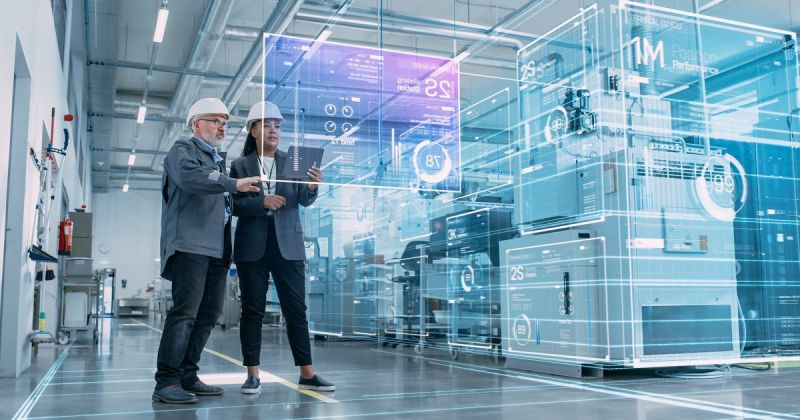Digital transformation is revolutionizing the manufacturing industry, reshaping traditional processes, enhancing operational efficiency, and fostering innovation across the value chain. From smart factories and IoT integration to data analytics and automation, manufacturers are leveraging digital technologies to optimize production processes, improve decision-making, and meet evolving customer demands. This article explores the key drivers, technologies, benefits, challenges, and future trends of digital transformation in manufacturing.
Key Drivers of Digital Transformation in Manufacturing
- Industry 4.0 Adoption: Embracing Industry 4.0 principles such as automation, connectivity, and data-driven decision-making to create intelligent, interconnected manufacturing systems that enhance agility and responsiveness.
- Demand for Operational Efficiency: Increasing pressure to reduce costs, minimize downtime, optimize resource utilization, and enhance productivity through advanced manufacturing technologies and process optimization.
- Customer Expectations: Meeting consumer demands for personalized products, faster delivery times, and transparent supply chains by leveraging digital solutions to improve flexibility, customization, and responsiveness.
Technologies Driving Digital Transformation
- Internet of Things (IoT): Connecting machines, sensors, and devices to gather real-time data on equipment performance, production metrics, and supply chain logistics, enabling predictive maintenance and process optimization.
- Big Data and Analytics: Analyzing large volumes of manufacturing data to gain actionable insights into production processes, quality control, supply chain management, and customer preferences, driving informed decision-making and continuous improvement.
- Artificial Intelligence (AI) and Machine Learning: Implementing AI-driven algorithms to automate tasks, predict maintenance needs, optimize production schedules, and improve product quality through anomaly detection and predictive analytics.
Benefits of Digital Transformation in Manufacturing
- Improved Operational Efficiency: Streamlining production workflows, reducing cycle times, and minimizing waste through automated processes, real-time monitoring, and data-driven optimization strategies.
- Enhanced Product Quality: Ensuring consistent product quality and compliance with industry standards by leveraging data analytics to identify and address manufacturing defects, variability, and performance issues.
- Agile and Responsive Supply Chains: Enhancing supply chain visibility, inventory management, and demand forecasting capabilities to respond quickly to market fluctuations, minimize stockouts, and optimize logistics efficiency.
Challenges in Implementing Digital Transformation
- Legacy Systems Integration: Overcoming challenges in integrating digital technologies with existing legacy systems, ERP platforms, and manufacturing execution systems (MES) to ensure compatibility and seamless data flow.
- Cybersecurity Risks: Protecting sensitive manufacturing data, intellectual property, and operational technology (OT) systems from cyber threats, breaches, and vulnerabilities associated with interconnected IoT devices and digital networks.
- Workforce Skills and Training: Upskilling employees to adapt to new technologies, digital tools, and automated systems, fostering a culture of innovation, continuous learning, and collaboration across departments.
Future Trends in Digital Manufacturing
- Digital Twins: Advancing digital twin technology to create virtual replicas of physical assets, production processes, and supply chain networks, enabling predictive modeling, simulation, and optimization of manufacturing operations.
- Blockchain for Supply Chain Transparency: Implementing blockchain technology to enhance transparency, traceability, and trust in supply chain transactions, ensuring authenticity, provenance, and compliance across global manufacturing networks.
- Edge Computing: Leveraging edge computing for real-time data processing, analytics, and decision-making at the factory floor, reducing latency, enhancing device autonomy, and supporting mission-critical applications in smart manufacturing environments.
Conclusion
Digital transformation is reshaping the manufacturing industry by leveraging advanced technologies to drive efficiency, innovation, and competitiveness. By embracing digital solutions, manufacturers can optimize production processes, improve product quality, and meet customer expectations for agile, responsive, and sustainable manufacturing practices. Overcoming challenges related to legacy systems, cybersecurity, and workforce readiness requires strategic investments, collaboration, and a commitment to continuous innovation in adopting and integrating digital technologies across manufacturing operations.


